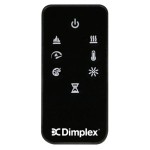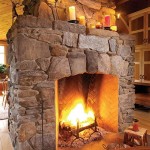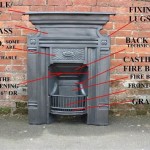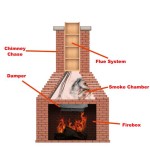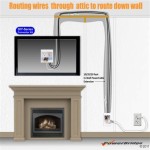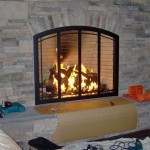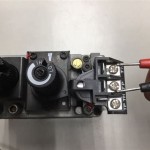Standard Fireplace Insert Dimensions: A Comprehensive Guide
Fireplace inserts are valuable additions to homes, offering increased heating efficiency and aesthetic appeal compared to traditional open fireplaces. These units are designed to fit directly into existing fireplace openings, providing a sealed combustion environment that maximizes heat output and reduces energy waste. Understanding the standard dimensions of fireplace inserts is crucial for selecting the right model for a given fireplace, ensuring proper fit, safe operation, and optimal performance. This article explores the typical dimensions of fireplace inserts, factors influencing size variations, and considerations for measuring a fireplace opening to facilitate a successful installation.
Understanding Standard Fireplace Insert Dimensions
Fireplace inserts are manufactured in a range of sizes to accommodate different fireplace openings. The dimensions generally considered are width, height, and depth. While there isn't a single "standard" size, certain dimension ranges are more common. These ranges accommodate the majority of existing fireplace designs.
Generally, small fireplace inserts might measure between 20 to 24 inches in width, 20 to 25 inches in height, and 14 to 20 inches in depth. Medium-sized inserts typically range from 24 to 30 inches in width, 24 to 28 inches in height, and 18 to 24 inches in depth. Large fireplace inserts can exceed these dimensions, reaching widths of 30 inches or more, heights above 28 inches, and depths greater than 24 inches. It is essential to note that these are approximate ranges and specific dimensions vary across manufacturers and models.
The heating capacity of a fireplace insert, often measured in British Thermal Units (BTUs), is closely related to its size. Larger inserts typically have higher BTU ratings, capable of heating larger spaces. However, selecting an insert solely based on BTU rating without considering the fireplace opening can lead to installation problems.
The efficiency of a fireplace insert is also an important factor. While size plays a role, the design and technology employed within the insert are primary determinants of efficiency. Modern inserts often incorporate features like catalytic combustors or advanced airwash systems to maximize heat extraction from the fuel and minimize emissions.
Fuel type influences the dimensions of fireplace inserts. Wood-burning inserts, for example, generally require a larger firebox to accommodate logs. Gas inserts, which burn natural gas or propane, may have smaller fireboxes but require space for gas lines and control valves. Electric fireplace inserts often have the most compact designs, prioritizing aesthetics and ease of installation over large heating capacity.
Factors Influencing Fireplace Insert Size Variations
Numerous factors contribute to the variations observed in fireplace insert dimensions. These include the manufacturer's design philosophy, the intended heating capacity, the fuel type, and the technological features incorporated into the unit.
Manufacturers often offer multiple series of fireplace inserts, each tailored to specific heating needs and aesthetic preferences. These series feature different dimensions, allowing consumers to select an insert that aligns with their requirements. Some manufacturers specialize in compact inserts for smaller fireplaces, while others focus on large, high-output models for larger homes.
The heating capacity of an insert directly impacts its size. Inserts designed to heat larger areas typically have larger fireboxes and overall dimensions. This is because a larger combustion chamber is needed to burn more fuel and generate more heat. Conversely, inserts intended for supplemental heating in smaller rooms can be more compact.
As mentioned previously, the type of fuel used affects the size of the insert. Wood-burning inserts require sufficient space to accommodate logs of various sizes. Gas inserts, while potentially having smaller fireboxes, need room for gas lines, valves, and burners. Electric inserts, which do not burn fuel, can be the most compact but must accommodate heating elements and electrical components.
Technological features, such as catalytic combustors or advanced airwash systems, can also influence the size of fireplace inserts. Catalytic combustors require space within the firebox to facilitate secondary combustion, potentially increasing the overall dimensions. Airwash systems, which use a stream of air to keep the glass door clean, may also necessitate additional space for air channels and vents.
The materials used in the construction of the fireplace insert can impact the overall dimensions. Steel inserts, for example, may have thinner walls than cast iron inserts, allowing for a slightly smaller overall size while maintaining structural integrity. The insulation used in the insert also affects its size. High-efficiency insulation can reduce heat loss and allow for a more compact design.
Measuring a Fireplace Opening for Insert Installation
Accurate measurement of the fireplace opening is critical for selecting a properly sized fireplace insert. Taking precise measurements ensures that the insert fits snugly within the existing fireplace, maximizing heat efficiency and preventing any safety hazards. The measurements needed include width, height, and depth of the firebox.
Before starting the measurement process, ensure the fireplace is cool and free of debris. Remove any existing grates, screens, or other accessories from the firebox. Use a measuring tape to carefully measure the width of the firebox opening at the front. Measure both the top and bottom widths, as these might differ slightly. Record the smaller of the two measurements as the firebox width.
Next, measure the height of the firebox opening. Measure from the floor of the firebox to the underside of the lintel, the horizontal beam that supports the chimney. Ensure the measuring tape is held straight and perpendicular to the floor. Measure both the left and right sides of the firebox and record the smaller measurement as the firebox height.
The depth of the firebox is measured from the front of the firebox to the back wall. Measure at the top, middle, and bottom of the firebox to account for any variations in depth. Record the shallowest measurement as the firebox depth. The depth measurement is particularly important because the insert must fit completely within the existing fireplace opening. A depth that is too shallow will prevent the insert from being properly installed.
In addition to the dimensions of the firebox opening, it is important to consider the dimensions of the fireplace surround, the decorative trim around the fireplace opening. The surround can impact the aesthetics of the installed insert and may require modification to accommodate the insert's faceplate or trim. Measure the width and height of the surround opening to determine the required faceplate or trim dimensions.
Finally, it's always a good practice to consult with a qualified professional before purchasing a fireplace insert. A professional can assess the fireplace opening, verify measurements, and recommend an insert that is appropriately sized and compatible with the existing chimney system. They can also provide guidance on installation requirements and ensure that the insert is installed safely and efficiently.
By carefully measuring the fireplace opening and understanding the standard dimensions of fireplace inserts, homeowners can select the right model to enhance their home's heating efficiency and aesthetic appeal.

616 Gas Fireplace Insert Eau Claire Hearth

The Proper Way To Measure Dimensions Of A Fireplace

616 Deluxe Ember Glo Made In America Fireplace Xtrordinair

Sierra Flame 30 Electric Fireplace Insert Firebox Heater Ins Fm Fireplaces Depot

Lopi Radiant Plus Medium Greensmart Basic Gas Fireplace Insert Hearth Appliances

Lopi 430 Gas Fireplace Insert Hearth And Home Distributors Of Utah Llc

Fireplace Inserts Explained Typical Sizing Functionality More

Gas Fireplace Inserts Chimney Sweep

Napoleon Gdi44 Gas Insert Fireplacepro

Lopi Stoves 430 Deluxe Gas Fireplace Insert Don S Stove
Related Posts

